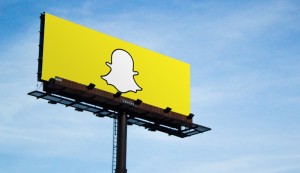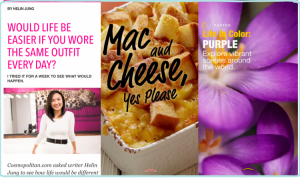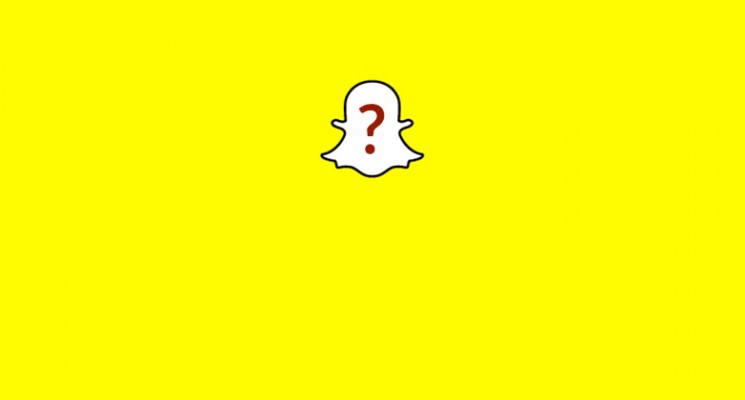What Every Leader Needs to Know About Snapchat
LeadershipMarketingSnapchat
It’s no longer wise for businesses to ignore America’s fastest-growing millennial social media platform.
If you’re like me, scrolling through daily news feeds you’ve suddenly been seeing a little yellow and white ghost icon everywhere. The icon for  Snapchat. Some of you may have even seen this logo during your morning commute as part of a confusing albeit successful ad campaign. Up until now every time I’ve heard Snapchat come up in passing, I’ve immediately put it out of my mind as a passing trend by “kids these days” (cue the image of an old man on his porch shaking his fist at the neighborhood kids on his lawn). But then I saw Forbes change their icon to this on my daily newsfeed.
Snapchat. Some of you may have even seen this logo during your morning commute as part of a confusing albeit successful ad campaign. Up until now every time I’ve heard Snapchat come up in passing, I’ve immediately put it out of my mind as a passing trend by “kids these days” (cue the image of an old man on his porch shaking his fist at the neighborhood kids on his lawn). But then I saw Forbes change their icon to this on my daily newsfeed.  Then the White House joined Snapchat in early 2016. The Wall Street Journal, CNN, ESPN and a myriad of other media outlets are on Snapchat. Then I realized this is serious. A Harvard IOP Poll has called Snapchat the fastest growing social media platform for millennials. So now it’s finally time to stop pooh-poohing this trend and to understand what it means for businesses today.
Then the White House joined Snapchat in early 2016. The Wall Street Journal, CNN, ESPN and a myriad of other media outlets are on Snapchat. Then I realized this is serious. A Harvard IOP Poll has called Snapchat the fastest growing social media platform for millennials. So now it’s finally time to stop pooh-poohing this trend and to understand what it means for businesses today.
I don’t know about you, but it seems I’m often last to the game with new technology. In fact, I remember hearing about Facebook in 2005 (which I ironically also thought was the trend of “kids these days”) and thought, “who would be interested in that?” Now that they have reached 1.6 billion monthly active users with their December 2015 Q4 earnings at $5.841 billion, I admit I’ll not be giving stock tips anytime soon!
To give you a sense for what Snapchat means to the evolution of social media, two years after Snapchat’s 2011 launch, Facebook tried to buy it for $3 billion, an offer that was turned down by Snapchat’s founders. For reference, Facebook bought Instagram in 2012 for $1 billion. Even at that early stage, both Snapchat and Facebook understood the growth potential of the platform…and they were right.
What is Snapchat – a 1 Minute Explanation:
It’s easiest to think of Snapchat as an app for self-destructing texts and media. Here are some ways that people use it:
Snap: A snap is a self-destructing text that you send to a specific person with words and/or video that lasts 1 to 10 seconds before it disappears. You can “chat” with an individual using text or by sending a snap, and each of these “chats” disappear after you view them.
Stories: Users can also create “stories” which is a collection of snaps from throughout that day that can be viewed for 24 hours by any of your followers. Stories can be viewed by all your followers, unlike Snaps which are like texts sent directly to an individual.
Discover: Snapchat launched the Discover feature in 2015, which allows users to receive media from select outlets (which currently include WSJ, CNN, ESPN, The Food Network, People, and Mashable, to name a few). This feature is fascinating for marketers, as the content style mirrors the informal, spontaneous and eye-catching spirit of Snapchat. Consumer online attention span has dwindled down to 8 seconds, and the Discover feature plays to the need for content to be quickly digested. To show you what this looks like, here is a snippet from the Wall Street Journal:
Lenses: Lenses are a daily collection of ways you can morph your face when you send a snap of yourself to someone. It’s a pretty clever way to give yourself rabbit ears, googly eyes or an Elmer Fudd face. Ironically, yesterday Facebook just acquired Masquerade (MSQRD), a similar face-swapping selfie app, in a move to likely compete with this addictive feature on Snapchat.


Lenses – the surprisingly addictive face-morphing feature of Snapchat.
Why Snapchat is different from Facebook, Twitter and Instagram:
Snapchat is a different kind of social media platform, and that’s why it has filled an untapped niche. Snapchat co-founder Evan Spiegel explained, “It’s much more for sharing personal moments than it is about this public display.” In social media terms, Twitter is all about sharing thoughts, Instagram is about sharing eye-catching photos, and Facebook is where people share life events. Snapchat is spontaneous, unfiltered communication that is not cataloged. There is no “timeline” or “feed” where you can visit past posts or communication. It’s in-the-moment, quick, informal (and sometimes silly) communication that disappears after it has occurred.
And so…why do I care?
Businesses need to take Snapchat seriously. Business leaders need to know what it is and marketers need to make decisions on how, if at all, it will be included in their social media strategy. If you are still skeptical, consider the following:
- Snapchat represents a business opportunity to speak to a large, younger audience. Snapchat has over 100 million users with over 7 billion daily video views. This means Snapchat has the same number of daily video views as Facebook, which has over 10 times as many users as Snapchat. 36% of Americans aged 18-29 have a Snapchat account, which makes this the fastest growing social network for millennials. 45% of Snapchat users are under 25, and the number of individuals over 25 who are using the service is rapidly growing. According to Nielsen, 41% of adults in the U.S. under 35 spend time on Snapchat. For companies looking to target millennials, Snapchat is a dynamic platform to reach this demographic.
- Snapchat represents the need for ever-evolving marketing strategies. Snapchat’s wildfire adoption represents the rapidly changing mediums that capture the public’s attention. Companies cannot stay afloat using their marketing plan from 5 years ago. To illustrate the evolution of marketing to millennials, Snapchat’s Discover feature with their short collections of catchy and easily-digestible content snippets represents a completely new way to market to a captive audience and it holds a lot of potential.

Gone are the days where we can disregard the rapid pace of technology changes around us. Gary Vaynerchuk, a social media guru, author and investor who predicted the success of today’s most popular social media platforms said,
“It took thirty-eight years before 50 million people gained access to radios. It took television thirteen years to earn an audience that size. It took Instagram a year and a half.”
Today’s most popular social media platforms have gained an audience so quickly that businesses need to sprint in order to stay in front of their customers. Snapchat’s adoption by millennials has taken off, and this reality holds great marketing potential for your business…and that of your competitors. So many companies have been late to table where social media is concerned, but the ones who have understood what social media means for their marketing strategy and have evolved are the ones that win in expanding their market share. Snapchat may not be right for every business. But every business should understand what Snapchat means to their customers.
